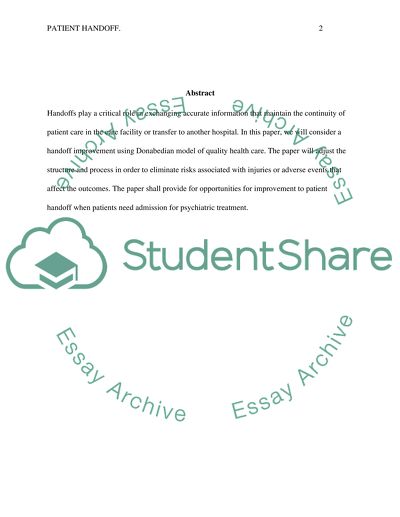Cite this document
(“Improving Patient Safety Using Donabedian Model Essay”, n.d.)
Retrieved de https://studentshare.org/health-sciences-medicine/1445639-improving-patient-handoffs-using-donabian-s-model
Retrieved de https://studentshare.org/health-sciences-medicine/1445639-improving-patient-handoffs-using-donabian-s-model
(Improving Patient Safety Using Donabedian Model Essay)
https://studentshare.org/health-sciences-medicine/1445639-improving-patient-handoffs-using-donabian-s-model.
https://studentshare.org/health-sciences-medicine/1445639-improving-patient-handoffs-using-donabian-s-model.
“Improving Patient Safety Using Donabedian Model Essay”, n.d. https://studentshare.org/health-sciences-medicine/1445639-improving-patient-handoffs-using-donabian-s-model.


